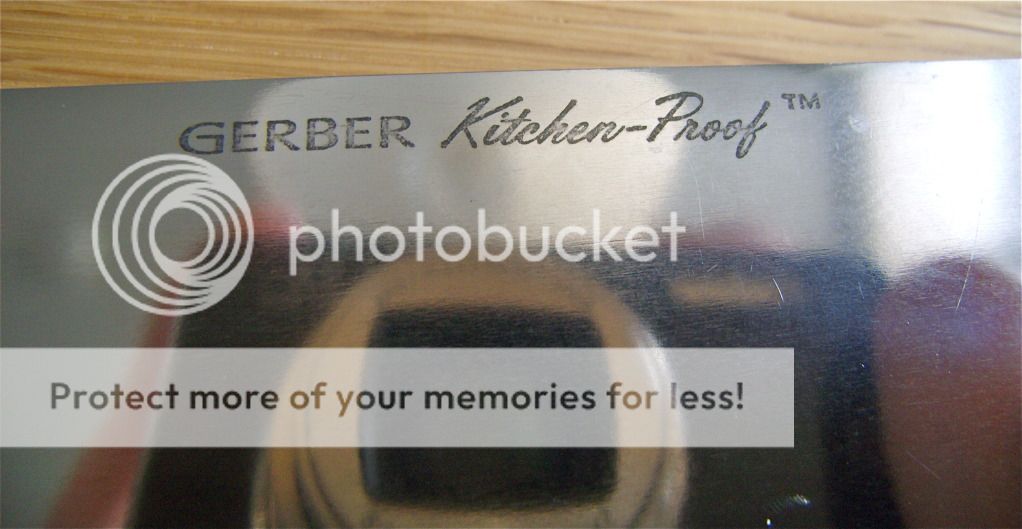These days they are almost forgotten, but a few decades back Gerber produced a few series of high quality kitchen knives.
This model Flamborge Chef knife possibly dating back to the sixties or seventies has the same construction as their hunting blades from the same period: a blade made from hard chromed M2 high speed steel and a cast-on aluminum handle with a grippy Armorhide coating.
Now you could dislike the overall design of the blade or the strange greenish color of the handle, but the build quality as well as it's usefulness is actually very good.
These pictures show the knife before sharpening:





The edge of the knife is originally almost completely straight, except for the curve towards the point, and the thin blade itself measures 0.32 mm just behind the edge.
This Flamborge is badly in need of a good sharpening because the edge is not only very blunt, it also doesn't touch the cutting board anymore over the complete length of it's edge (it's a bit hollowed out)

In the years that these knives were sold on the American market many users experienced difficulties in sharpening them because of the hard steel.
Diamond stones were not readily available to anyone yet and most people relied on natural Arkansas stones anyway.
Steve Bottorf, the author of the book "Sharpening made easy" was one of them:
"The most difficult knives I ever tried to sharpen was an old set of Gerber kitchen knives.
They were so hard that natural stones hardly touched them.
Diamonds would grind them, but I don't have a diamond stone fine enough for a shaving edge.
Paper wheels is the only system that has ever brought these knives to a razor edge."
Specs:
Overall length: 15.2 inch (38,7 cm)
Blade length: 10.1 inch (25,6 cm)
Maximum blade thickness: 2,24 mm
Thickness behind the edge: 0,32 mm
Steel: Hard chromed M2 High Speed Steel
Handle material: Cast-on aluminum with green Armorhide coating
This model Flamborge Chef knife possibly dating back to the sixties or seventies has the same construction as their hunting blades from the same period: a blade made from hard chromed M2 high speed steel and a cast-on aluminum handle with a grippy Armorhide coating.
Now you could dislike the overall design of the blade or the strange greenish color of the handle, but the build quality as well as it's usefulness is actually very good.
These pictures show the knife before sharpening:





The edge of the knife is originally almost completely straight, except for the curve towards the point, and the thin blade itself measures 0.32 mm just behind the edge.
This Flamborge is badly in need of a good sharpening because the edge is not only very blunt, it also doesn't touch the cutting board anymore over the complete length of it's edge (it's a bit hollowed out)

In the years that these knives were sold on the American market many users experienced difficulties in sharpening them because of the hard steel.
Diamond stones were not readily available to anyone yet and most people relied on natural Arkansas stones anyway.
Steve Bottorf, the author of the book "Sharpening made easy" was one of them:
"The most difficult knives I ever tried to sharpen was an old set of Gerber kitchen knives.
They were so hard that natural stones hardly touched them.
Diamonds would grind them, but I don't have a diamond stone fine enough for a shaving edge.
Paper wheels is the only system that has ever brought these knives to a razor edge."
Specs:
Overall length: 15.2 inch (38,7 cm)
Blade length: 10.1 inch (25,6 cm)
Maximum blade thickness: 2,24 mm
Thickness behind the edge: 0,32 mm
Steel: Hard chromed M2 High Speed Steel
Handle material: Cast-on aluminum with green Armorhide coating
Last edited:













